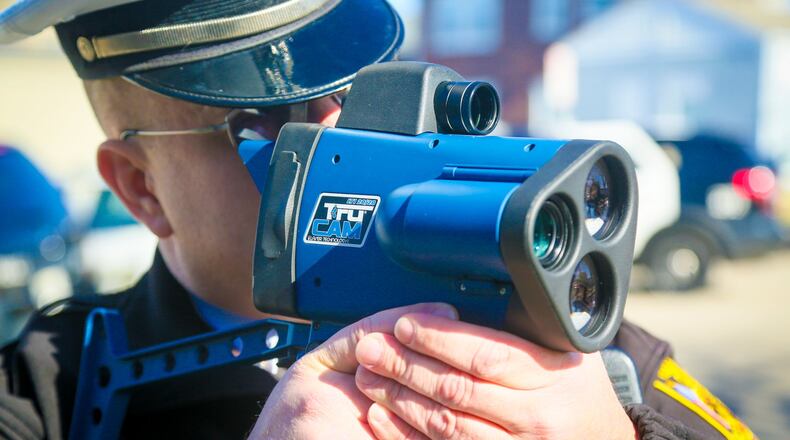Unlike other programs, Hamilton’s uses either a manned vehicle that is clearly marked or hand-held devices operated by officers, which avoid issues of drivers not being able to face their accusers. In fact, when Ohio lawmakers in 2015 approved legislation for procedures to be used under such programs, several aspects were modeled after the city’s program, council was told.
Before the decision, Vice Mayor Michael Ryan asked how much the program would cost city government. He was told the program has no cost to the city. Rather, of the money generated by the program, 65 percent goes to the city, while 35 percent goes to Redflex.
The city can cancel the contract at any time with 10 days notice without financial penalties. The program generates about $100,000 per year, which goes into Hamilton’s general fund.
Hand-held devices also can be used in marked cruisers.
Mayor Pat Moeller said it’s especially important to use the program in school zones and other sensitive areas for speeding to get people to slow down there. He said he is confident the program has helped reduce fatalities on Ohio 129, where the program has slowed vehicles.
Public Safety Director Scott Scrimizzi said the thresholds used in the program are high: “It’s 10 miles an hour over (the speed limit) in a school zone. If you’re going 10 miles over (in a school zone), you deserve a ticket. It’s 14 miles an hour over in a 35-mph zone.”
He added: “We do not have enough officers right now. Speeding is our No. 1 complaint, I would think, without question, that we get from our citizens.”
It’s hard to refute the citation when you can go onto your computer and see it is your car, and you’re driving it, officials said.
Scrimizzi added that former Hamilton County Prosecutor Mike Allen, who is critical of such programs and spoke against them on WLW radio, accepted an invitation from the city to review Hamilton’s speed program and, “He said, ‘If everybody operated the program the way that you guys do, I would have no problem with it.’” Allen later went on WLW and expressed that view.
Resident Alfred Barron during a public hearing on the matter told council he thinks the program is good. In fact, he said he would like the program used in the areas of Knightsbridge Drive and Pershing Avenue, which he said sometimes can resemble “speedways” and where there have been several crashes in recent years.
When the under-construction South Hamilton Crossing is finished later this year, linking Ohio 4 with the area of Miami University Hamilton’s campus and the Vora technology park, that would be a good area for such enforcement, Barron added.
Police Chief Craig Bucheit agreed that speeding is probably the biggest complaint people express during neighborhood meetings and said, “This is just one of many tools we use to keep our streets safe.”
“It’s not a money-grab,” said Council Member Carla Fiehrer. “We care more about safety than the money it brings.”
About the Author
